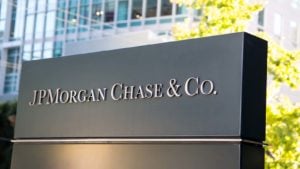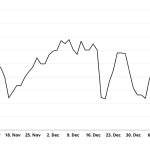
In the current economic landscape, inflation continues to play spoilsport. Prices have surged noticeably compared to past years. To combat this, savvy investors are pivoting to dividend stocks as a hedge against inflation, ensuring financial stability.
With last year’s price surge still echoing, investors need a well thought-out game plan. However, there’s a silver lining. While the allure of high yields can be tempting, investors should understand the importance of prioritizing sustainability over fleeting highs. The solution isn’t necessarily in stocks with sky-high dividend yields. Instead, the real gems are companies offering decent yields with a consistent history of dividend growth. As we dive deeper, let’s explore these viable options that can potentially guard against the inflationary tide.
Walmart (WMT)

Retail giant Walmart (NYSE:WMT) continues to assert its dominance in the market, defying the odds and turning heads with its financials. The retail behemoth saw a robust 24% increase in sales from the previous year, raking in $161.63 billion in revenue between April and June. Moreover, it reported second-quarter earnings of $1.84 a share, nudging past the expected $1.71.
Transitioning to its shareholder commitment, Walmart’s dividend story is remarkable. Beginning with a modest 5 cents a share in 1974, the company has diligently raised this figure annually. This steadfast approach crowned it as one of the S&P 500’s recent “Dividend Kings,” celebrating 50 years of consistent increases and currently offering a 1.4% yield.
Furthermore, investors have responded positively to Walmart’s dynamic approach. In a testament to its enduring market relevance, WMT stock has surged by an impressive 15% over the past year. As Walmart evolves, its outlook remains bright for the company and investors.
PepsiCo (PEP)

Emerging from the historic fusion of Pepsi-Cola and Frito-Lay in 1965, PepsiCo (NASDAQ:PEP) has firmly established itself in the esteemed dividend king club. Through the decades, it has faced its share of ups and downs, while recent waves have seen an 11% dip over the year in PEP stock.
Nevertheless, PepsiCo has since displayed unyielding commitment, raising it annually. Since 2010, shareholders have witnessed an average dividend surge of 8% per year. Now, they enjoy a robust quarterly dividend of $1.26 per share, translating to an attractive yield of 3.2% based on the current share price.
Furthermore, their financial prowess speaks volumes. PepsiCo’s third quarter delivered whopping results. Posting an earnings per share of $2.24 on $23.45 billion in revenues, they outperformed market expectations. With projections of a 13% bump in profits and a 10% revenue growth, PepsiCo’s future gleams brightly, positioning it as a compelling play for prospective investors.
JPMorgan Chase (JPM)

In the unpredictable landscape of banking, JPMorgan Chase (NYSE:JPM) stands out as a testament to financial resilience. While many face challenges, JPMorgan confidently sails through, emphasizing its dominant position in the financial realm. The third quarter bore witness to this prowess, revealing a stellar net income of $13.15 billion and diluted earnings reaching $4.33 per share, notably outpacing market forecasts.
Moreover, after acing the U.S. Federal Reserve’s stress test, JPMorgan promptly rewarded its shareholders by boosting its quarterly dividend by 5% to $1.05 per share. This move not only signifies stability but also underscores their commitment to sustained dividend growth. Furthermore, the bank’s executives have highlighted plans to continue prioritizing dividend payouts.
In today’s challenging economic landscape, JPMorgan emerges as a beacon of stability. Trading at a modest nine times future earnings, notably below the S&P 500 average price-to-earnings ratio, the stock has jumped 8.9% year-over-year. Moreover, with a quarterly dividend yielding 3%, JPMorgan stands strong against the inflationary tide.
On the date of publication, Muslim Farooque did not have (either directly or indirectly) any positions in the securities mentioned in this article. The opinions expressed in this article are those of the writer, subject to the InvestorPlace.com Publishing Guidelines.




